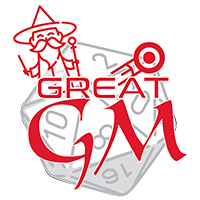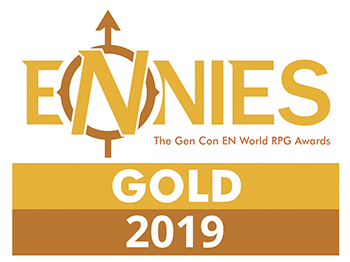Lerin
THe Lerin are the non-Inkallu of Laran. While Lerin technically encompasses both the slave and free populations of Laran, it is colloquially used to refer only to the free population.
It is important to stress simply how much of the Lerin culture depends on Lati. Everything from fashion to naming conventions is based off whether or not Lati approve, in an effort to imitate the gods of Laran.
It is also worth pointing out that the amount of Lerin who respect Lati for their power but don't worship them as gods is quite large, maybe one in five. No Lerin wouldn't acknowledge the power a Lati holds, but not all revere them. It is a case of acknowledging the Gods among Man.
It is important to stress simply how much of the Lerin culture depends on Lati. Everything from fashion to naming conventions is based off whether or not Lati approve, in an effort to imitate the gods of Laran.
It is also worth pointing out that the amount of Lerin who respect Lati for their power but don't worship them as gods is quite large, maybe one in five. No Lerin wouldn't acknowledge the power a Lati holds, but not all revere them. It is a case of acknowledging the Gods among Man.
Naming Traditions
Unisex names
All Lerin names are unisex and most are three syllables or less. Examples include Ran; Xhan; Tera; Oli; Davaj; Kidlan; Rikin; Berin; Boral; Namus; Umbrag.
Family names
Family Names tend to be compliments and titles granted by a Lati to a member of the Lerin family and passed down through generations. Most families have numerous options for surnames, so the most valued of the titles or compliments is used. Examples Include Admiral Steadfast; Jovial Loyalty; Clever Gardener. Even so, Family Names are rarely used, even in formal documents.
Culture
Major language groups and dialects
When Lerin converse with oen another, they speak Larani, with dialects varying depending on home planet and which part of the Tzaran Streams they are form. When speaking a Lati, a dialect of Lati {Language} is used.
Culture and cultural heritage
The Cultural Heritage of the Lerin is tied to Laran. Most Lerin views their demographic as that of the state, with its accomplishments and heritage bing their accomplishments and heritage. Aside from Laran, most Lerin are culturally tied to their god/Lati of choice, usually, one relating to either their family or their profession.
Shared customary codes and values
All Lerin share a dedication to Laran, as a nationalistic zeal is instilled into them from a young age. Lerin values are modelled after those of the Lati, where the more conniving and pwoer-hungry someone is, the more they are respected. This is much more tempered with practicality than that of the Lati however, as the well being of Laran comes first. If Laran is significantly damaged by a Lerin's power grab, then they are disgraced more than respected.
Average technological level
See Laran.
Common Etiquette rules
Most Lerin are expected to show respect to people of higher authority, and no respect is demanded from them for those with less social and official standing.
Common Dress code
Lerin are expected to wear versions of their official uniforms whenever out and about. Most professions have different uniforms, one for actually working, one for formal events, and one for going out, so that all can see that Lerin's station. In practice e, this is rarely held to, as most organizations, namely the government, don't have the time nor resources to produce different variations of a uniform for every employee as well as several pairs of each.
Art & Architecture
Art is heavily restriced by Larani censors, but it comes in many forms such as mosiacs, literature, painting, music, etc. Architecture is again, that fo Laran, with a MesoAmerican and Sci-Fi aesthetic, though this changes depending on region.
Common Customs, traditions and rituals
The most common cultural practice every Lerin will engage in, even the non-religious, is going to the temple of their Lati of choice and engaging in some sort of prayer at a minimum, once a month. This is done as a way of staying connected to their state, to their gods, and to other Lerin.
Birth & Baptismal Rites
When a Lerin is born, they are usually blessed by the clergy of their local Lati temple. It is usually an Adept, but on rare occasions, a full-fledged Lati blesses child. This usually marks the Lerin in question as a high-standing member of Lerin society, even if their family came from nothing.
Coming of Age Rites
The closest thing to a coming of age rite that the Lerin have is that once someone has finished their mandatory education, they are conscripted into the military.
Funerary and Memorial customs
When a Lerin dies, they are cremated, with their ashes being held in a family mausoleum.
Common Taboos
Common Myths and Legends
Most Myths & Legends of the Lerin are tales of extraordinary lati.
Historical figures
Ideals
Beauty Ideals
Gender Ideals
No Gender Roles, everything is completely unisex. The only exceptions are for pregnant women, and once a new Lerin is born, every parent is expected to help with childcare.
Relationship Ideals
Unlike the Lati, most Lerin value healthy relationships and dynamics. Abusive partners and uneven power balances are frowned upon by most unless the Lerin is in a relationship with a Lati. Despite the balance of power in such a relationship being skewed so much in favor of the Lati it reaches the point of ridiculousness, most Lerin would admire someone who was able to woo a Lati.
Major organizations
The Factions fo the Lerin are just the non-Inkallu members of the different Dynasties of Power.
Related Organizations
Languages spoken
Remove these ads. Join the Worldbuilders Guild









Comments